Tundras are considered the coldest biome with the taiga biome being a close 2nd. Tundra biomes can reach -34 degrees Fahrenheit and are below freezing for 6 to 10 months of the year. The Tundra like a desert receive little rainfall each year about 15 inches. There are 3 types of tundras antarctic, alpine, and arctic which the arctic and antarctic are very similar just one being on the north pole with more plant life and the other being on the south pole with less plant life. Now lets see how these animals survive such harsh conditions.
Arctic Fox
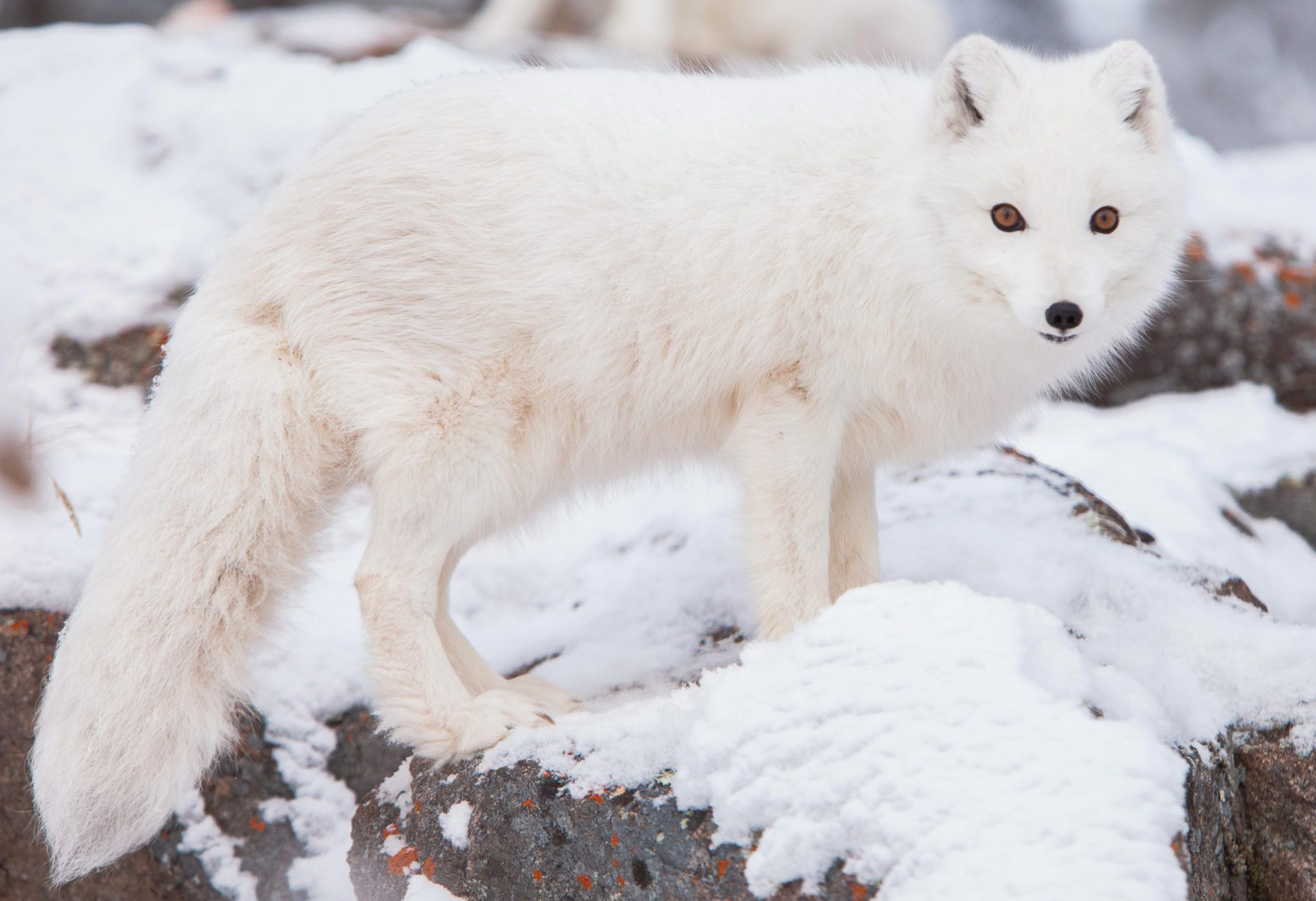
The Arctic fox also known as the white fox, polar fox, or snow fox is a small fox that is native to the arctic regions of the Northern Hemisphere. They are considered small foxes because they only weigh up to 21 lbs and 27 inches in length. They are also considered prey to Red foxes along with polar bears, wolfes, Wolverines, Grizzly bears, and eagles. The way Arctic foxes avoid being consumed by predators is though their thick white fur blending in with the snow. They will camouflage themselves in snow and have fur on their feet so they can quietly move in the snow. Arctic foxes are omnivores and will eat berries, eggs, birds, squirrels, and will scavenge remains of other dead animals.
Beluga whale
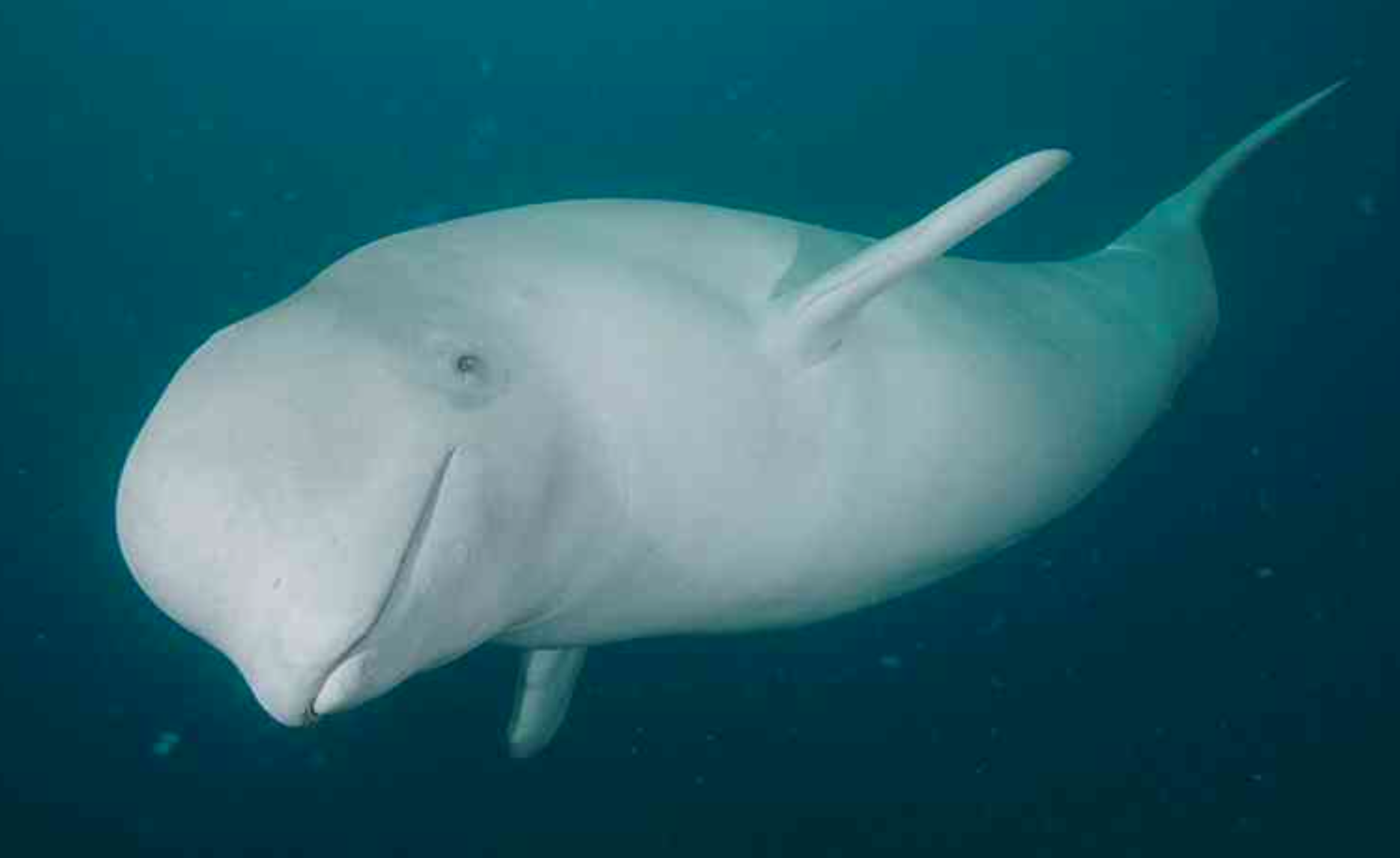
The beluga whale inhabits the Arctic and sub-Arctic waters. They can live for up to 50 years onld and they have a gestation period of 12 - 14 months. They can grow to a length of 15 feet long and weigh as much as 3,500 lbs. Beluga whales are carnivores eating fish, crustaceans, and molluscs. Although Beluga whales are large they are not the apex predator and are preyed on by polar bears and orcas. They are social animals living in groups called pods. Fun fact beluga whales have flexibe necks that allow them to nod their heads in all directions.
Caribou
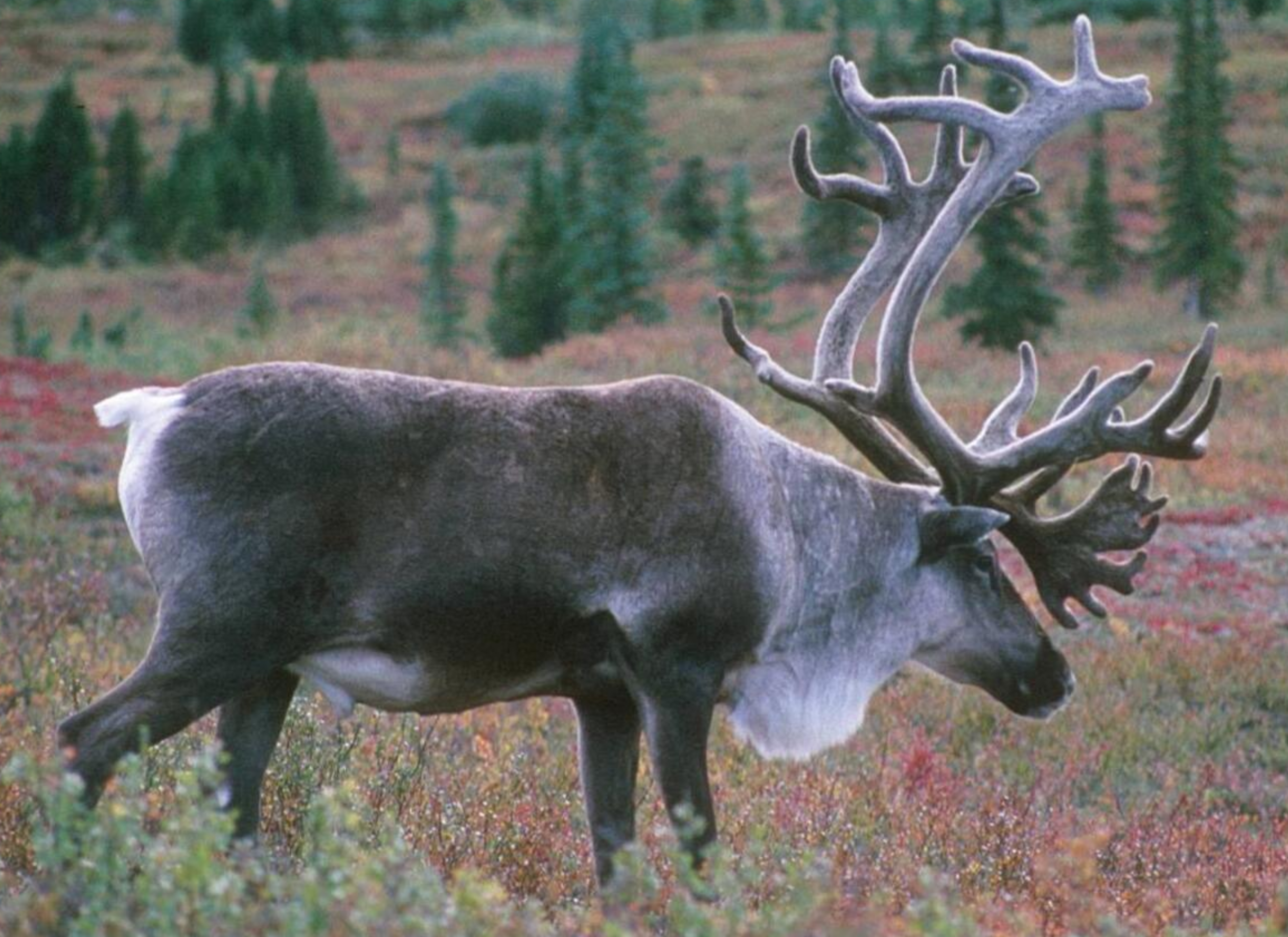
Caribou or reindeer are a species of deer that are native to Arctic tundra and live in mountainous regions of northern Europe, Siberia, and Northern America. Caribou can grow to a height of 4.9 feet tall and weigh as much as 400 lbs. Caribou are herbivores eating leaves of willows, sedges, flowers of tundra plants, muchrooms, moss, and grasslike plants. The two main predators of caribou are wolfes and grizzly bears but wolverines will eat small Caribou. Fun fact caribou are the only member of the deer family that both sexes grow antlers.
Narwhal
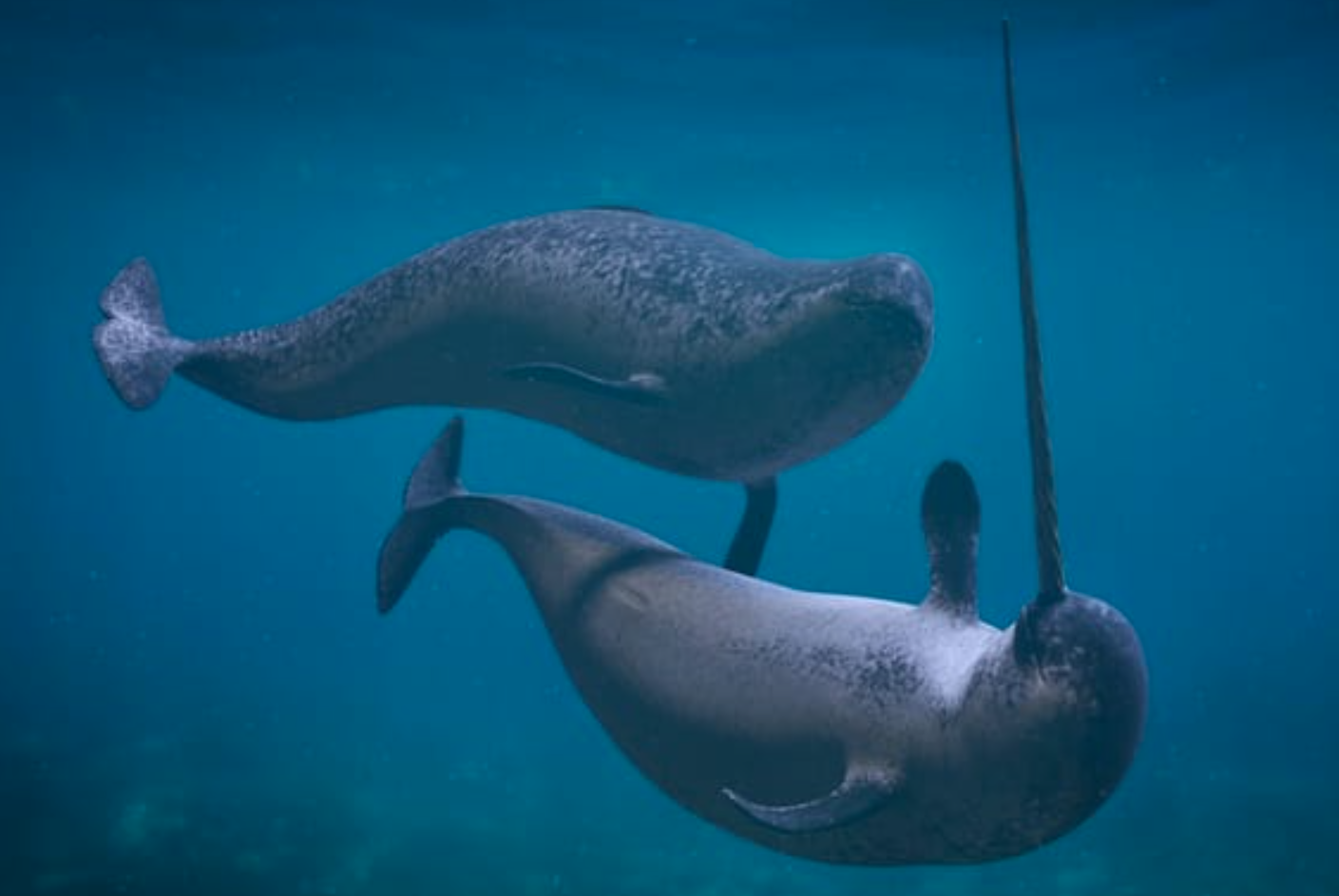
Narwhal also known as the narwhale is a medium-sized toothed whale that possesses a large tusk on it's head. Narwhals can grow to a length of up to 17 feet and their tusk can grow up to 10.2 feet long. They can weigh as much as much as 3,500 lbs. Their lifespan can go all the way to 50 years old and they have a gestation period of 13 to 16 months. Narwhals are carnivores and eat halibut, cod, shrimp, and Gonatus squid. Narwhals are also not apex predators and are food for polar bears and orcas. Fun fact not all Narwhals have a tusk it is usually just males that have tusks but some females do have tusks.
Polar bear
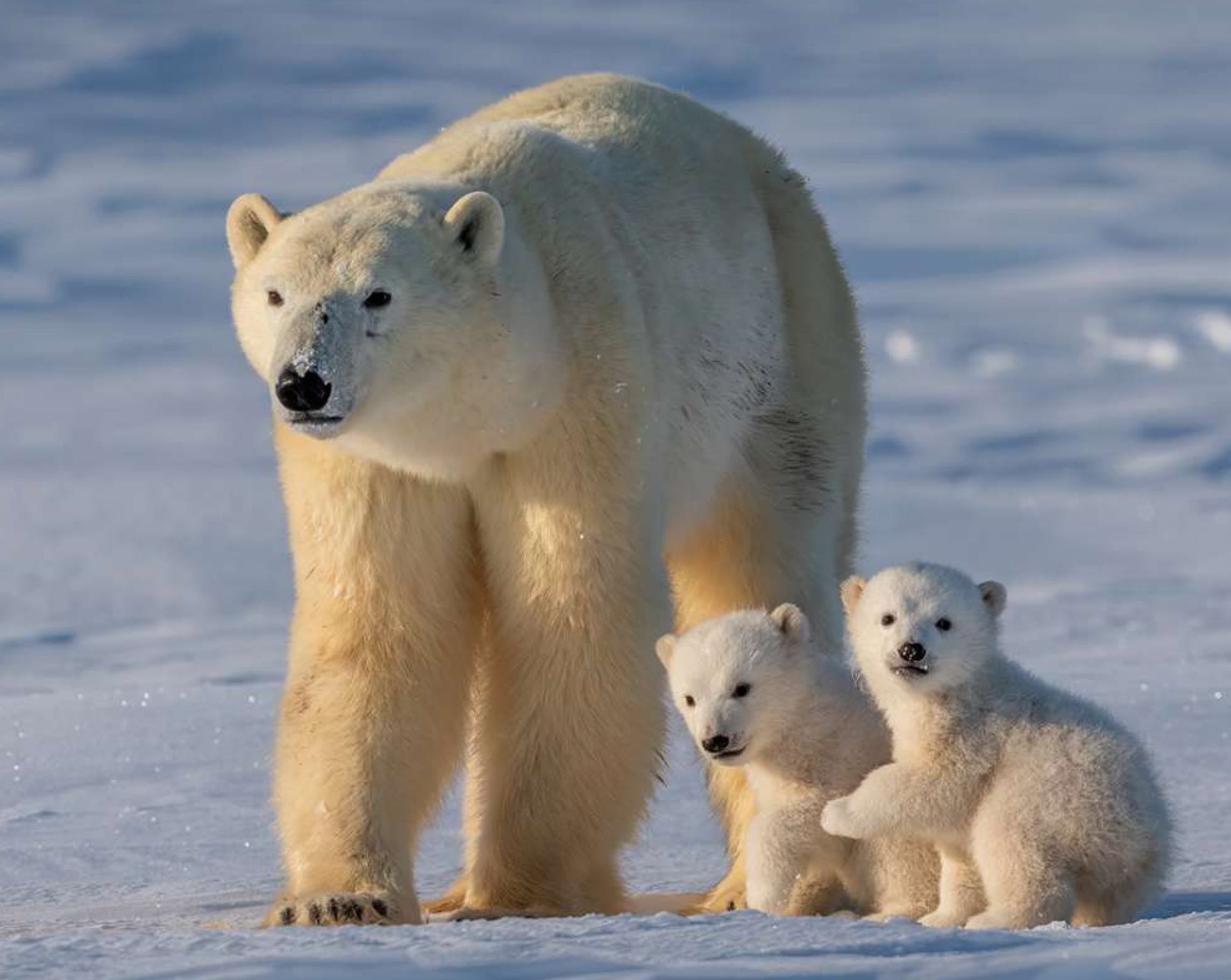
Polar bears are large bears native to the Arctic. They are the largest species of bear and land carnivore and on average they weigh between 660 - 1,760 lbs and their average height is 7 to 8 feet tall. The largest polar bear ever recorded weighed 2,209 lbs and was close to 12 feet tall. Polar bears are one of the apex predators of their biome and about half of a polar bear's life is spent hunting for food. Polar bears are the only bear that is exclusively carnivorous they prey on mostly seals but they will eat anything smaller than them and some bigger like narwhals and beluga whales.
